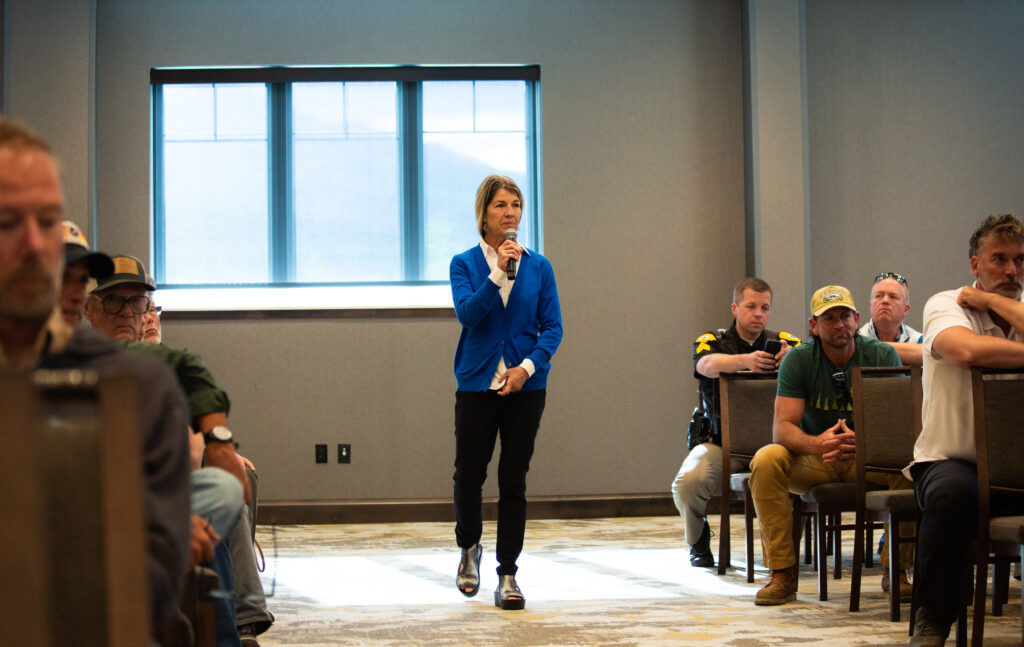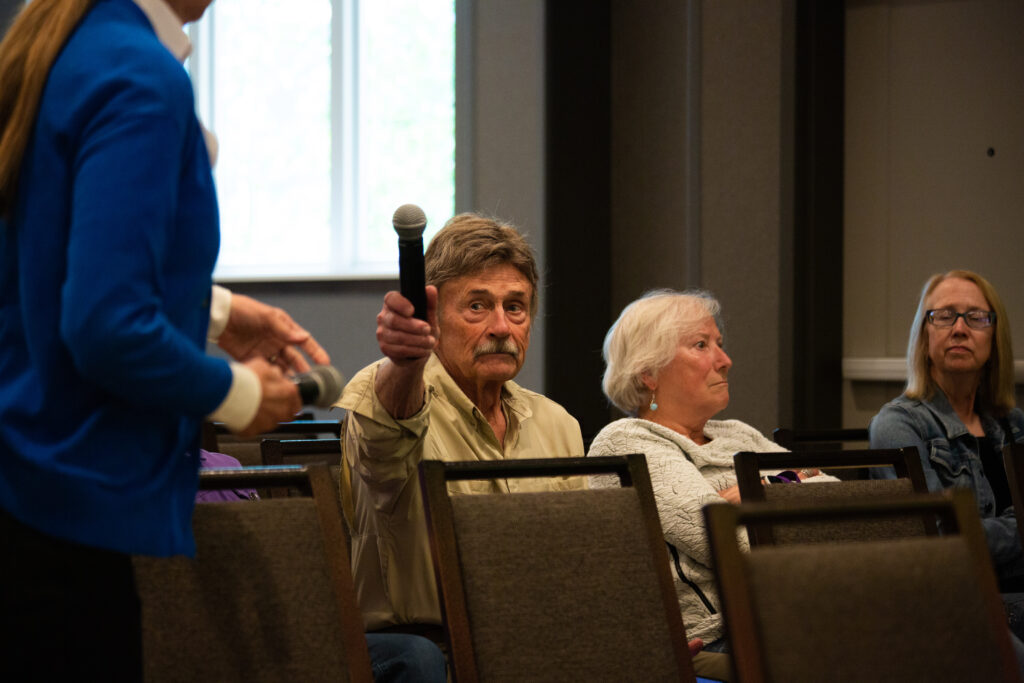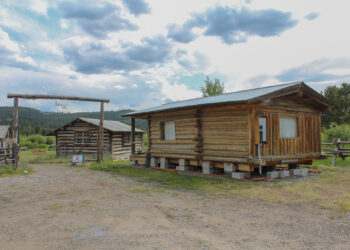Scenarios discussed at local governance study meeting
By Fischer Genau DIGITAL MEDIA LEAD
Whether or not Big Sky will incorporate as a municipality has been a point of discussion for as long as many have lived in the resort community. On July 22, the discussion progressed as the Big Sky Governance Study presented three scenarios for potential forms of government in Big Sky at a public meeting in The Wilson Hotel.
The meeting was the third in a series of discussions about the future of Big Sky’s governance. The study team is working towards a report that will outline potential futures for government in Big Sky, which they expect to complete in the fall of this year. Based on community input from over 400 people between focus groups and a survey, the study group developed three main scenarios that will appear in the final report.
“This is the last check,” Dylan Pipinich, a study leader and land planner for WGM Group, said at the meeting. “It’s time to go.”
The first potential governance scenario is limited incorporation, in which Big Sky would become a municipality—the study team expects Big Sky would technically classify as a city of the third class—with a small staff and limited capacity. The second scenario is more comprehensive incorporation, with a bigger municipal staff, more departments, more capability and higher costs. The third scenario involves Big Sky creating its own county. According to the study group, this would be the most difficult and expensive path to take, but it would likely result in greater representation for Big Sky residents and more tax dollars returned to the community.
The fourth option, not included in the presentation but raised by both Pipinich and several attendees, is to maintain the status quo. Big Sky would remain unincorporated, and a detailed exploration of this option will also be included in the final report.
Over 50 people attended Tuesday’s meeting, and Pipinich emphasized the importance of community feedback during the entire process.
“Engagement drives the study,” Pipinich said. “There is no predetermined outcome.”
A survey of 355 people showed that 30% fully support change of Big Sky’s government structure even if major barriers exist, while another 37% support change only if those barriers are reasonable. Those barriers for implementation vary for each of the three outlined scenarios.
A closer look at the three scenarios
The first scenario, a limited form of incorporation, would be the cheapest option. The new municipal government described by this scenario would include a mayor, two city council members, a part-time judge, and a city clerk and treasurer. It would also include a finance and budget department, public works department, a contracted city attorney, and city planning, zoning and building codes.
The second scenario, a more robust form of incorporation, would involve everything included in the first scenario. However, it would add a third city council member, administration services, and community development, law enforcement, parks and recreation, and human resources departments. Under this scenario, the new municipality limits would include Mountain Village, Meadow Village, Town Center, and the connecting areas between them.
The third scenario, to create a new county, drew the most commentary from meeting attendees. The proposed county would encompass the current Big Sky Resort Area District boundary, while the new city of Big Sky within it would be the same as what’s described in the first two scenarios. In addition to city officers and departments, the county would have to include an accessor, auditor, clerk of district court, coroner, sheriff, public health department and more.
There are also considerably higher barriers to creating a county. These include high costs and legal requirements such as majority-supported petitions from areas to be withdrawn from existing counties, and the existence of 250 square miles of surveyed land excluding federal forest reserves. A new county hasn’t been created in Montana since 1924.
Pipinich and his colleagues developed their three scenarios based on themes they gathered from community voices and survey results. Pipinich said the main themes were a desire for more community representation, more efficient coordination of service gaps like public transportation and planning and zoning, keeping the implementation of resort tax the same, and a concern about implications for property taxes in Big Sky. Pipinich also cited community interest in implementation barriers. He said that Big Sky residents are interested in change as long as the benefits are clear and there is a transparent plan.
“The community is willing to do hard things if it benefits them,” Pipinich said.

Moving forward
In their final report, the study team will calculate hypothetical revenues and costs for each scenario. Then they will estimate how much Big Sky residents and businesses would have to pay in taxes to cover total costs, and the associated long-term costs or benefits after implementation.
First, the study group will release a draft of the report for public comment in the fall of 2025 before revising it and publishing their final report. After that, it will be up to the community to decide how to move forward. Although the Big Sky Governance Study was commissioned by the Big Sky Resort Area District, the district told EBS via email it does not intend to lead future discussions or take a position on the four scenario options.
Just before the meeting concluded, community member Lydia Pulley thanked the study group for their work.
“I just wanted to offer some thanks for this hard work and really compliment you on what you guys did,” Pulley said. “This was taking a lot of input from a lot of different interests and distilling them into themes and trying to come up with scenarios, it’s not easy, so I appreciate it.”
After her remarks, the whole room applauded, and Pipinich responded with thanks of his own.
“Obviously we’re not done, but this community has showed me a new way to do things,” Pipinich said. “I’ve learned probably more than you will, and I would like to thank you for that as well.”
The study team said they will publish the results of their survey on their website by the end of July.

















